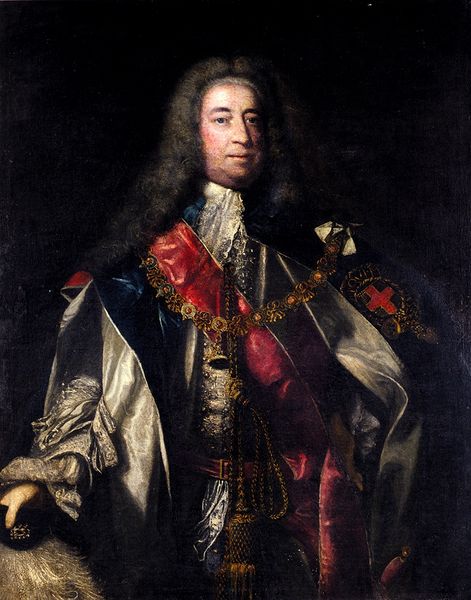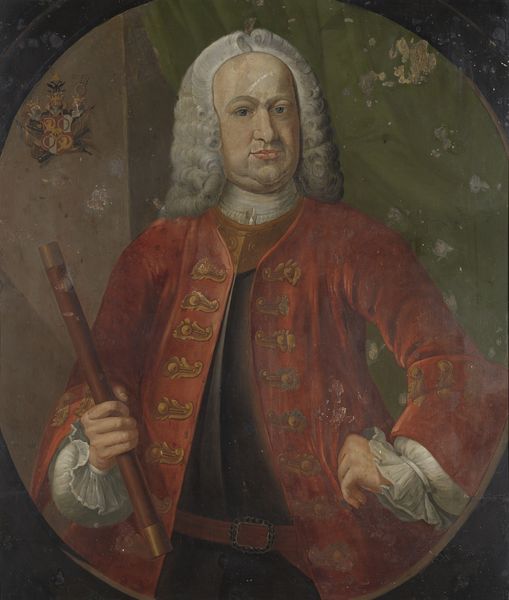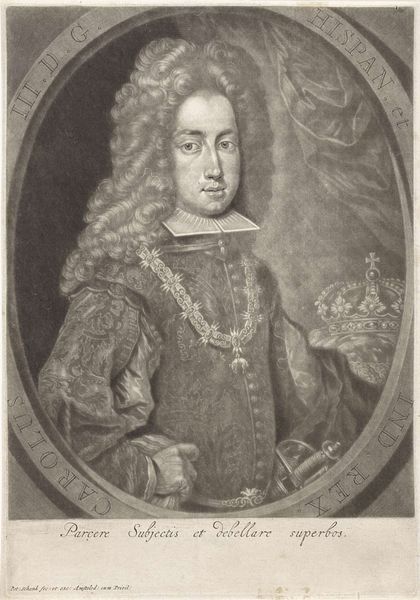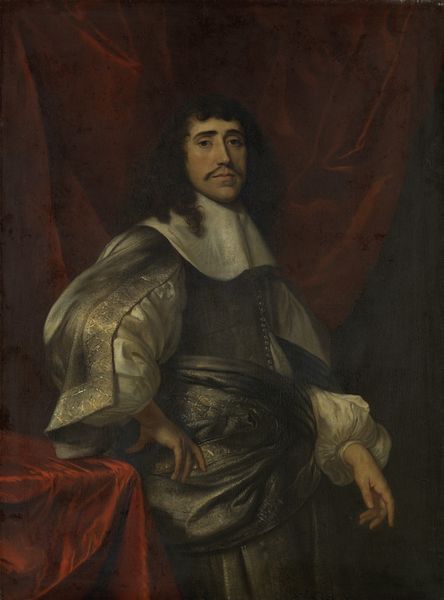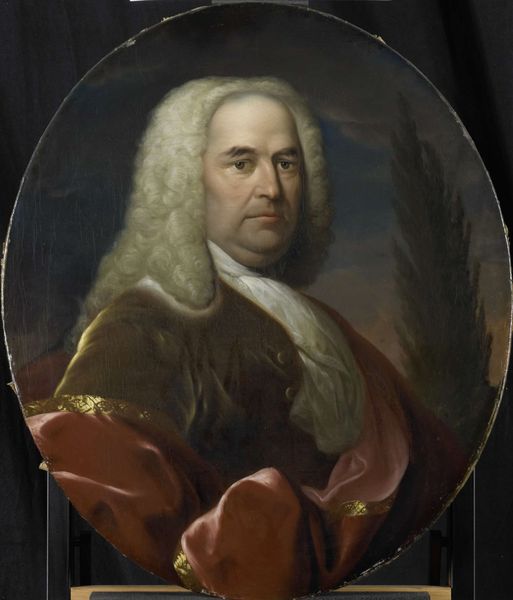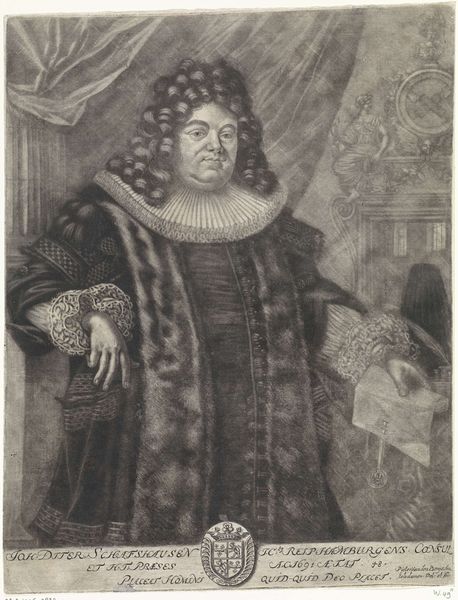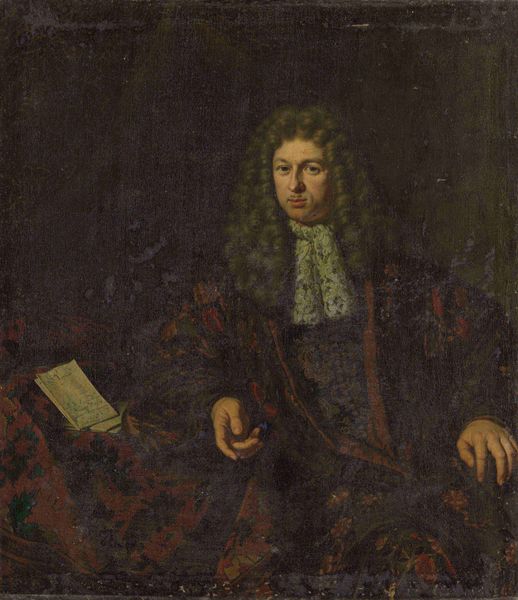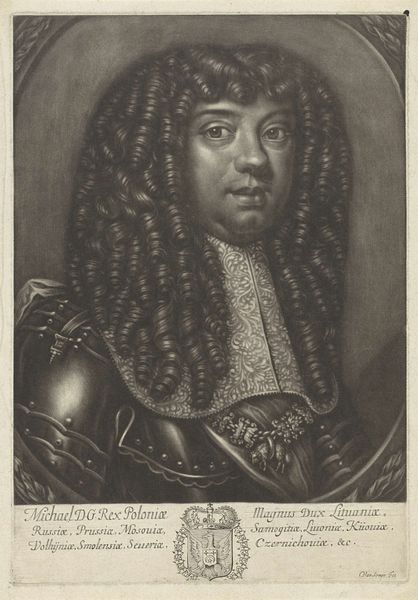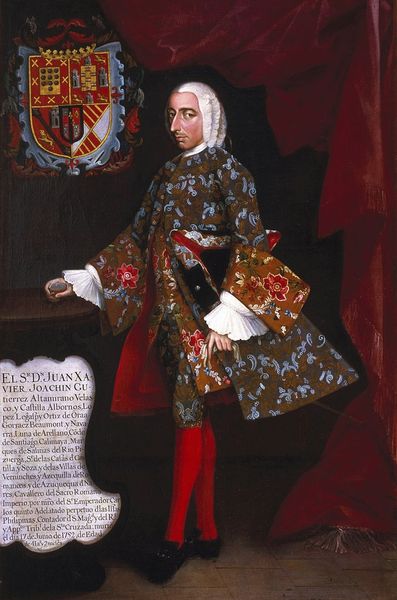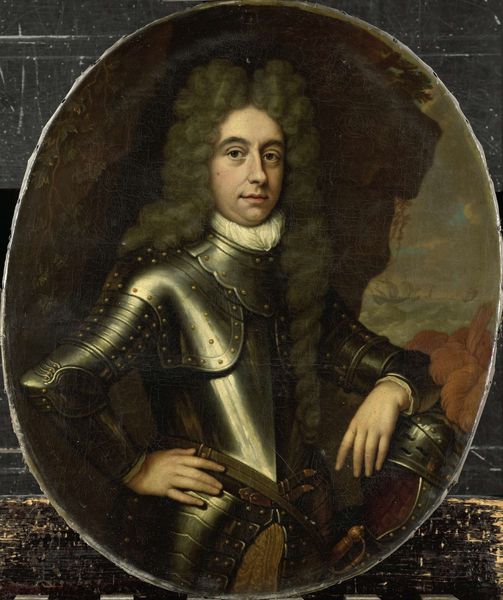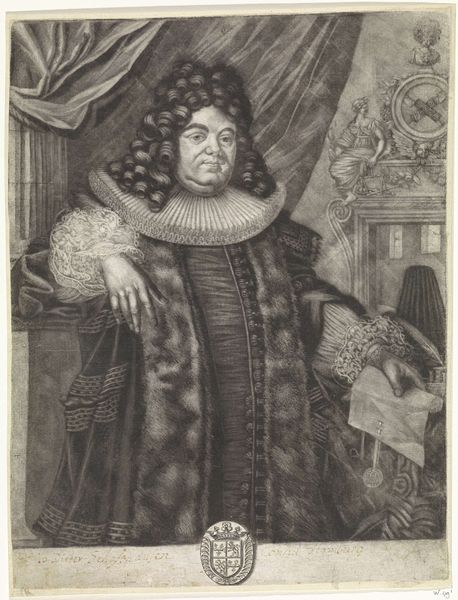
Portrait of Johannes Camprich van Cronefelt, Knight of the Order of St. Maurice and St. Lazarus, Imperial German Ambassador to The Hague 1679 - 1687
0:00
0:00
oil-paint
#
portrait
#
baroque
#
oil-paint
#
oil painting
#
history-painting
#
portrait art
Dimensions: height 36 cm, width 27.5 cm, thickness 1.0 cm, depth 6.5 cm
Copyright: Rijks Museum: Open Domain
Editor: Here we have a portrait, believed to have been completed between 1679 and 1687 by Simon Ruys. It’s oil on canvas and titled, “Portrait of Johannes Camprich van Cronefelt, Knight of the Order of St. Maurice and St. Lazarus, Imperial German Ambassador to The Hague.” It feels like a study in power, really. How do you interpret the portrait's depiction of power and status? Curator: I see a carefully constructed representation of power, yes, but also one deeply embedded in a specific historical and social context. The opulent robe, the Order insignia – they’re not just markers of status, but symbols of belonging to a particular socio-political order. Consider what it meant to be an ambassador during this period. What kind of power did they hold, and for whom? How do his clothes enforce and reinforce that power dynamic? Editor: So it's more than just a portrait; it's about the historical forces that shaped him? Curator: Exactly. This portrait allows us to examine the performance of identity within rigid structures of power. Notice the almost theatrical quality. It reminds us that identities were not just individual but tied to the machinations of court life, the social structures of the era, and the expectations placed on figures like Cronefelt. Editor: It's fascinating to think about how much this image is actively *doing,* in terms of building this figure's image. Curator: Indeed. And who does that image serve? It reminds us to constantly question not just what we see but *why* we are seeing it, who benefits, and whose stories remain untold in this very deliberate construction. Editor: I never thought about portraiture in quite this way before; it opens up a whole new area of inquiry. Thank you. Curator: My pleasure. Art becomes truly fascinating when we use it to question power and unravel the threads of history.
Comments
No comments
Be the first to comment and join the conversation on the ultimate creative platform.

